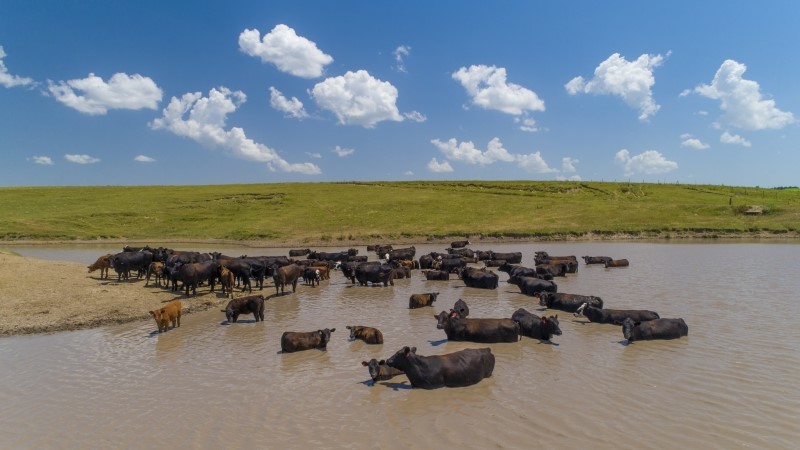Heat causes stress and other negative effects in cattle production.
August 5, 2020

Extreme summer heat can be a cause for concern for feedlot operators and cattle producers, and cattle at a comfortable temperature are more productive, gain weight more efficiently and maintain a higher level of health, according to the University of Nebraska-Lincoln.
“I think our producers, for cattle welfare interests and good business sense, are very interested in managing that stress to maintain performance and prevent losses,” said Galen Erickson, Nebraska cattle industry professor in the animal science department at the University of Nebraska-Lincoln. “There are tools that many feedyards have implemented that really are to aid in cattle welfare in these heat stress events.”
One helpful tool that producers can use to monitor weather and best manage agricultural resources with is the Nebraska State Climate Office’s Nebraska Mesonet calculator.
Data pulled from the Nebraska Mesonet can be used to determine the cattle comfort index, a formula that accounts for temperature, humidity, wind, precipitation and sunlight and how those factors affect cattle health. The Nebraska Mesonet is a statewide weather observation network of nearly 70 stations that record weather conditions every five minutes, 365 days a year. Many other states also have Mesonet systems.
“It’s the comprehensive look at how stressed the cattle were leading up to now and how stressed will they be going forward,” Erickson said.
The Mesonet Cattle Comfort Index, which is used worldwide, was developed and introduced as the Comprehensive Climate Index by Terry L. Mader and Leslie J. Johnson at the University of Nebraska, along with and John B. Gaughan at the University of Queensland in Gatton, Australia.
“We can run the same equation year-round and give a value of what it feels like if you’re a cow out there in real time,” Martha Shulski, director of the High Plains Regional Climate Center, said.
The Mesonet also runs an experimental forecast tool that can help producers prepare for conditions ahead. “The current weather and how long cattle have been in certain conditions is important, but also looking at what conditions will be over the next two weeks may be more important,” Shulski explained.
In Nebraska, cattle can experience both heat stress and cold stress, but there are many tools to mitigate heat stress, and heat stress tends to be a bigger issue for cattle producers than cold-related stress, Erickson said.
To help cattle stay comfortable in hot weather, Erickson recommended that producers focus on three main heat mitigation strategies: sprinkling the ground with water to cool it down, providing cattle with access to shade and creating additional water tank space. Airflow challenges may or may not be something that can be modified, but in some cases, it cannot be addressed.
Erickson said, “Farmers and ranchers do a good job of watching the weather, and we want them to watch these indices as well to help them prepare -- not just, ‘Is it going to rain?’ but 'How comfortable are the cattle going to be tomorrow or this week?'”
You May Also Like


.png?width=300&auto=webp&quality=80&disable=upscale)
